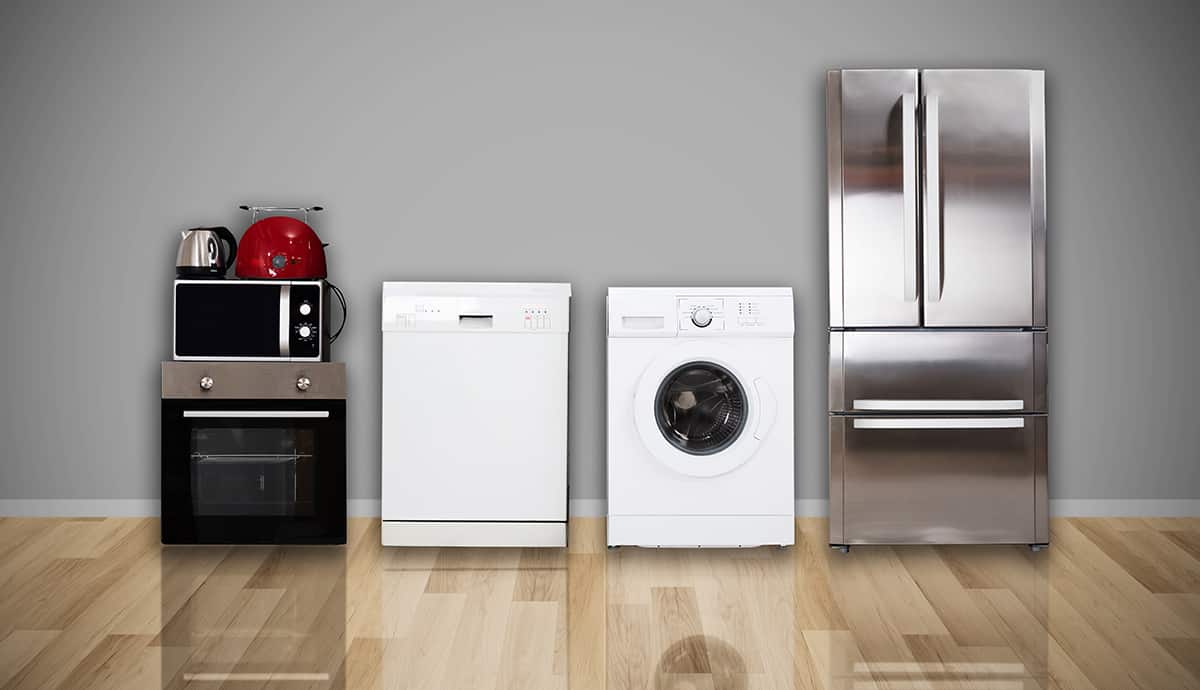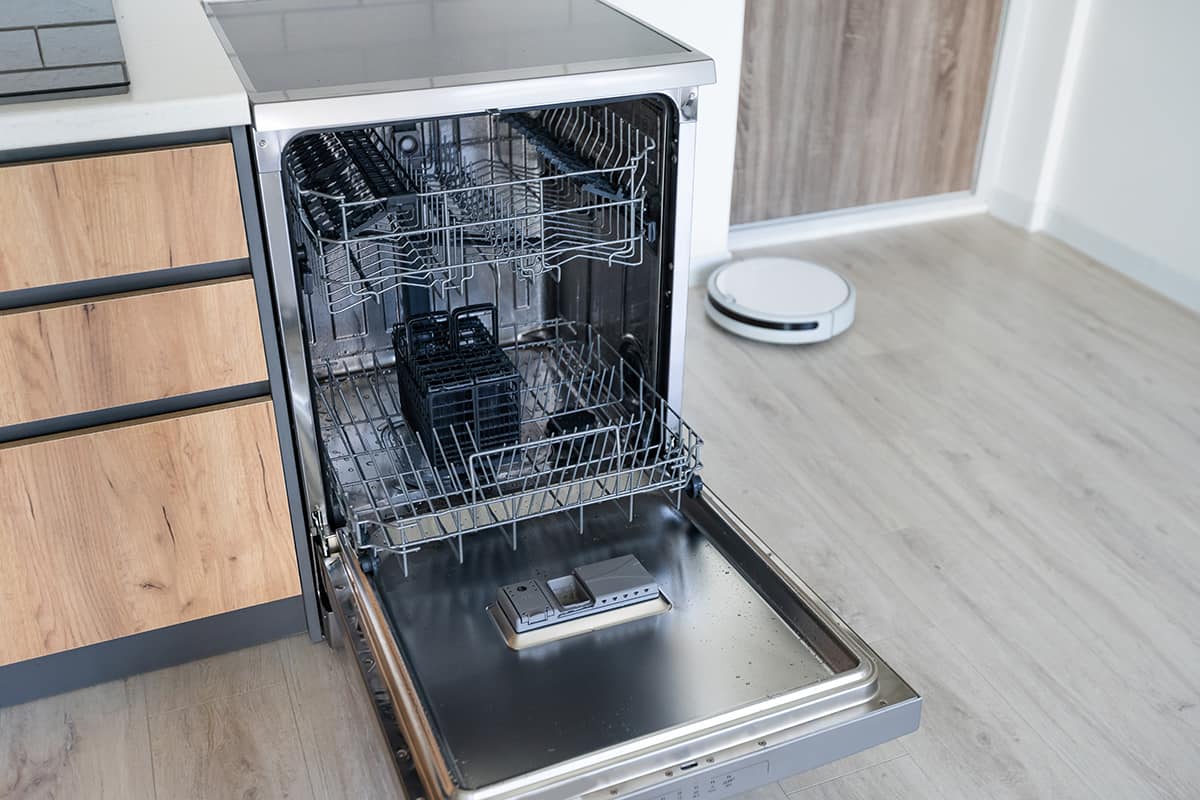While dishwashers use considerably less water than washing dishes by hand, there’s another cost you have to factor in: electricity. Most major home appliances draw 20 to 60 amps, but what about dishwashers?
On average, a dishwasher will draw 10 amps. However, there are models that draw up to 15 amps, depending on how many features it comes with and which cycles you run. to avoid overload, you should plug a dishwasher into a 15- or 20-amp circuit.
You should know how much power your dishwasher draws if you plan on installing on in a newly built home or if you’re unsure whether the electricity costs are worth the convenience. In this guide, I’ll explain what other factors you need to consider when powering your dishwasher, such as whether or not it requires its own circuit and how to maximize energy efficiency.
How Many Amps Does a Dishwasher Draw?
Like other kinds of household appliances, dishwashers come in a wide range of styles and with different features. From a power consumption standpoint, the characteristics of the dishwasher will influence how much it will cost to run.
Every dishwasher uses a different amount of electricity. You can typically find how many amps the machine draws on the back of your dishwasher in the specs section or in the owner’s manual. A typical or mid-sized dishwasher draws around 10 amps.
Realistically, a dishwasher will draw between 10 and 15 amps. It’s possible to run between 1200 and 1800 watts with this much amperage. Running the highest number of cycles and at a higher frequency rate will undoubtedly lead to a significant spike in power costs.
Even though most mid-sized dishwashers are rated at 10 amps, it makes sense to connect it to a circuit with 15 to 20 amps. That way, when you run more power-demanding cycles, the dishwasher will not lead to sudden power outages or lose power out of the blue.
Multiple Appliances on the Same Circuit?

After learning that the standard mid-sized dishwasher requires around 10 amps to run, would it be okay to plug it into the same circuit as other household appliances? The answer is, it depends on the appliances.
Let’s say you plugged your dishwasher into a 20-amp circuit and that your dishwasher operates at 10 amps. That’s 50% of the circuit’s capacity allocated to a single appliance. Now, the standard refrigerator requires 10 amps to run. That’s 100% capacity gone.
However, it’s important to understand the difference between surge and running amperage. Surge amps refer to how much power an appliance draws upon startup, which can be significantly higher than it requires to run. For example, a dishwasher may surge at 12 amps and operate at 10 amps, while a refrigerator surges at 20 amps and operates at 10 amps.
When both appliances surge at the same time, they will draw around 32 amps, which can trip the circuit breaker.
What Happens If a Circuit Is Overloaded?
Overloading a circuit means plugging too many power-hungry appliances into the same circuit. When this happens, your home may experience a sudden power outage, and you will have to unplug your appliances before turning the circuit breaker back on.
The circuit breaker is the saving grace—its purpose is to protect your electronics from damage caused by overloaded circuits. So, when a circuit breaker trips, that means it’s doing its job.
However, a sudden loss of power is never good for your appliances. A dishwasher that is stopped mid-cycle will fail to drain water, or, in extreme cases, the control board may need to be reset.
Plug-in vs. Hardwired Dishwashers
Deciding on whether to leave your dishwasher as a plug-in unit or to hardwire it into your home’s electrical system is entirely up to you. Well, except for those who live in cities or states that mandate hardwired dishwashers.
In terms of power consumption, there is no difference between the two methods. If a dishwasher draws 10 amps and surges at 12 amps when plugged in, it will consume the same amperage levels when hardwired.
The main differences between plug-in and hardwired dishwashers are convenience and aesthetics. Hardwired dishwashers are more convenient as owners don’t have to worry about loose power cables and whatnot. In addition, hardwiring keeps the appliance’s power cables out of sight.
On the other hand, plug-in dishwashers are easier to crack open and inspect since all you have to do is unplug the machine. Hardwired dishwashers require turning off the circuit breaker to stop the flow of electricity into the machine’s system.
You might also want to consider the safety benefits of hardwiring your dishwasher. Hardwired dishwashers have fewer exposed cables, which are less prone to making contact with water, assuming the dishwasher was installed properly and any exposed cables were cased in a flexible case or protector.
How to Maximize Energy Efficiency for Dishwashers?
From the explanation above, it’s evident that dishwashers, while extremely convenient, might be a bit too power-hungry for some people. However, there are ways to reduce power consumption, which you can find below:
Choose the right dishwasher size—Generally speaking, a large dishwasher will consume more power a than small or mid-size dishwasher. If you don’t need a large machine to wash a dozen place settings at once, look for a smaller machine.
Reduce water temperature—Bring your home’s water heater down to 120°F if it isn’t already. Dishwashers come with internal heating elements that will raise the temperature of water, regardless of how hot it is. If your water heater is set to 140°, the dishwasher will needlessly raise it to 150° or 160°, wasting energy in the process.
Scrub your plates thoroughly before inserting them in the dishwasher—If you find bits of debris on the surface of your dishes after putting them through a full dishwasher cycle, wash them off by hand. Alternatively, scrub your plates clean before placing them in the dishwasher. That way, you will not have to run double or triple rinse cycles.
Run a wash cycle only when the dishwasher is fully loaded—The more dishes you can wash in a single cycle, the less energy your dishwasher will use per dish. However, do not overload the dish racks as the spray arms might fail in rinsing every dish.
Make use of Economy Mode—Modern dishwashers will come with an Economy Mode or Eco-Mode. When activated, this mode will limit the overall washing, heating, and rinsing times, thereby using less water and power to operate.
Air-Dry Your Dishes—If you want to save on electricity even further, deactivate Drying Mode and let your dishes air-dry in the dish racks overnight.






